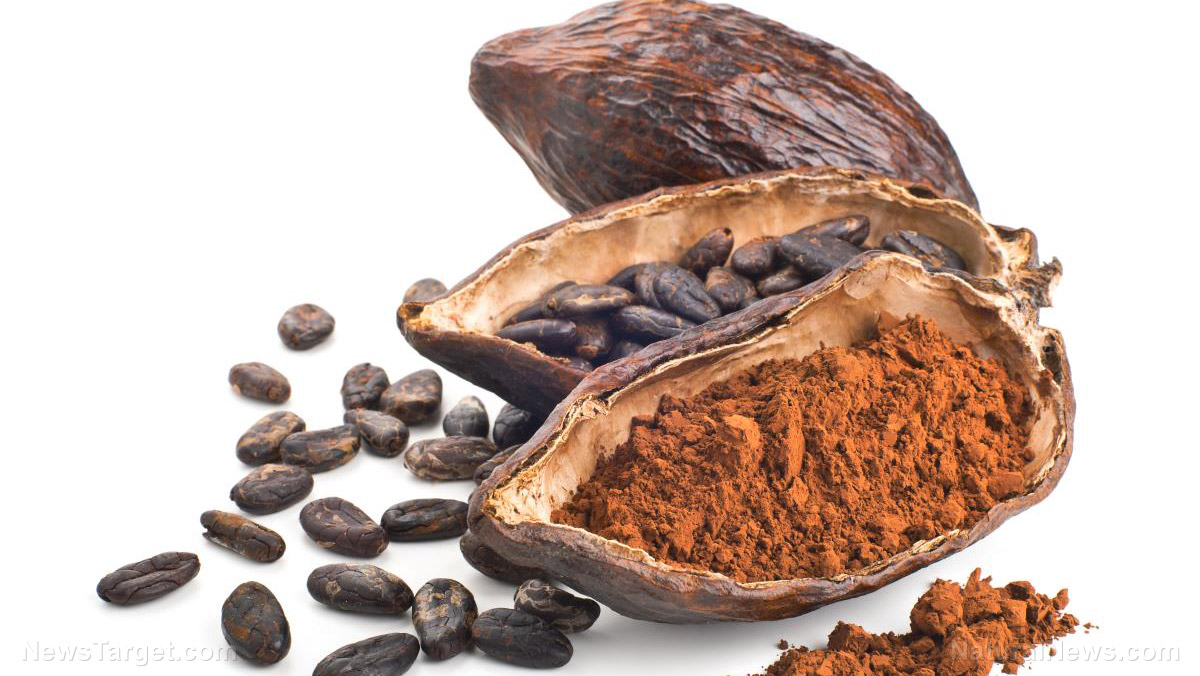5 Medicinal mushrooms you can grow in your home garden or forage in your backyard
04/11/2022 / By Zoey Sky

Having a home garden is a must for preppers, especially if your goal is to be more self-sufficient. If you want to grow medicinal mushrooms in your garden, read on to learn more. (h/t to TheOrganicPrepper.com)
Before you decide which mushrooms to grow, take note that they require more hard work to grow compared to regular fruits and vegetables. If you can’t grow them in your garden, you have the option to forage for mushrooms.
Garden giant mushrooms
According to a study, garden giant mushrooms contain antioxidants. Rat subjects that consumed the mushrooms also had lower blood sugar and cholesterol levels.
Grow garden giant mushrooms broken shade with well-drained, moist soil. Mix mushroom mycelium with fresh hardwood chips or sawdust. Avoid chips or sawdust from fragrant woods such as cedar, eucalyptus, juniper, pine or redwood. If you don’t have wood chips, use fresh straw instead of hay.
Garden giants can produce from spring through fall. Cut them loose, snap them off or twist them off. Leave a few fruits in the patch for more mycelium production so you can keep harvesting.
Giant puffball
Research suggests that giant puffball mushrooms have cholesterol-lowering abilities. The mushrooms are also used to treat traumatic hemorrhage and oral bleeding.
Giant puffballs contain calvacin, a compound that is believed to be an anti-cancer agent.
Compared to garden giants, giant puffballs are more difficult to cultivate on purpose. Fortunately, you can forage for them if you know where to look.
You can find giant puffballs in timber areas and meadows, fields or even your own yard. Giant puffballs are widespread and fairly common in many areas throughout America.
There are different varieties of true puffballs, but the giant ones are the most popular. Once you take a puffball from the ground, it has an edible span of about two weeks.
Pick puffballs during their immature stage, which is when their flesh is perfect for eating. After that, puffballs begin to rot out and become inedible.
Lion’s mane mushrooms
Lion’s mane mushrooms are well-known for what they can do for your nervous system. Studies show that lion’s mane mushrooms can stimulate the production of nerve growth factor (NGF) in those with Alzheimer’s disease, Parkinson’s or dementia. In turn, this helps protect neurons and cognitive ability.
Data from a study on mice also revealed that lion’s mane mushrooms can help partially recover locomotor frailty and protect the cerebellum. This implies that any age-related decline in movement ability originating from the brain could potentially be slowed with lion’s mane mushrooms.
The mushrooms also contain erinacine and hericenones that can raise dopamine levels, increase dopamine receptors and help prevent depression.
The immune system also benefits from lion’s mane mushrooms because they can stimulate the production of anti-inflammatory substances from macrophages and cytokines. The mushrooms also help to protect the liver from injury caused by specific enzymes. (Related: Organic functional mushrooms: best immune-boosting medicine from Mother Nature.)
Lion’s mane mushrooms also offer benefits for gut health since they can help the beneficial bacteria Bifidobacterium and Lactobacillus to colonize the intestines even better than they normally would.
There are different species of lion’s mane and they’re generally white in color. Sometimes, lion’s mane is tinged with yellow or pink.
When foraging for lion’s mane mushrooms, look for the tell-tale icicle-like “teeth” hanging from the central stalk. While they start off relatively short, these teeth can grow longer than one centimeter long or even longer.
If you split open a mature lion’s mane mushroom, you’ll see that there’s little body to speak of and a large cluster of icicle-like mushroom teeth. Lion’s mane mushrooms grow on beech trees and hardwood species like oak and maple.
Oyster mushrooms
Oyster mushrooms are often considered the easiest to grow. They are full of lovastatin, which can help lower one’s cholesterol levels. There are a wide variety of oyster mushrooms.
In one study that tested grey, pink and white oyster mushrooms, scientists reported that the grey-colored oyster mushrooms had the highest levels of lovastatin.
Shiitake mushrooms
Like oyster mushrooms, shiitake mushrooms can help lower cholesterol.
Shiitake mushrooms are full of eritadenine, another chemical compound that also helps lower one’s cholesterol levels. The mushrooms are also rich in beta-glucans, which limits the gut’s ability to absorb cholesterol.
The compounds also help reduce inflammation within the body.
Beta-glucans are good for your body’s ability to produce white blood cells. The compounds also offer benefits for the immune system.
Shiitake mushrooms are also a good source of selenium.
However, some people have a sensitivity to eating too many shiitake mushrooms because of the chemical lentinan. The compound may cause a skin rash that can last for one to two weeks if you eat too many shiitake mushrooms.
Mushrooms are an amazing superfood, and you should grow them in your home garden if you can. Alternatively, you can learn how to identify them and forage for mushrooms in the wilderness or even in your backyard.
Watch the video below to know how mushrooms can boost your brain health.
This video is from the Groovy Bee channel on Brighteon.com.
More related stories:
Leftover inspiration: Look in your fridge for ideas for your next gardening project.
5 Nutritious, fast-growing vegetables that you need in your home garden.
Shiitake mushrooms are a powerful medicinal superfood.
Sources include:
Submit a correction >>
Tagged Under:
bug out, emergency medicine, foraging, functional foods, functional mushrooms, gardening tips, green living, home gardening, homesteading, medicinal mushrooms, natural medicine, preparedness, prepper, prepping, survival, survival medicine, tips
This article may contain statements that reflect the opinion of the author
RECENT NEWS & ARTICLES
COPYRIGHT © 2017 NATURAL CURES NEWS




















